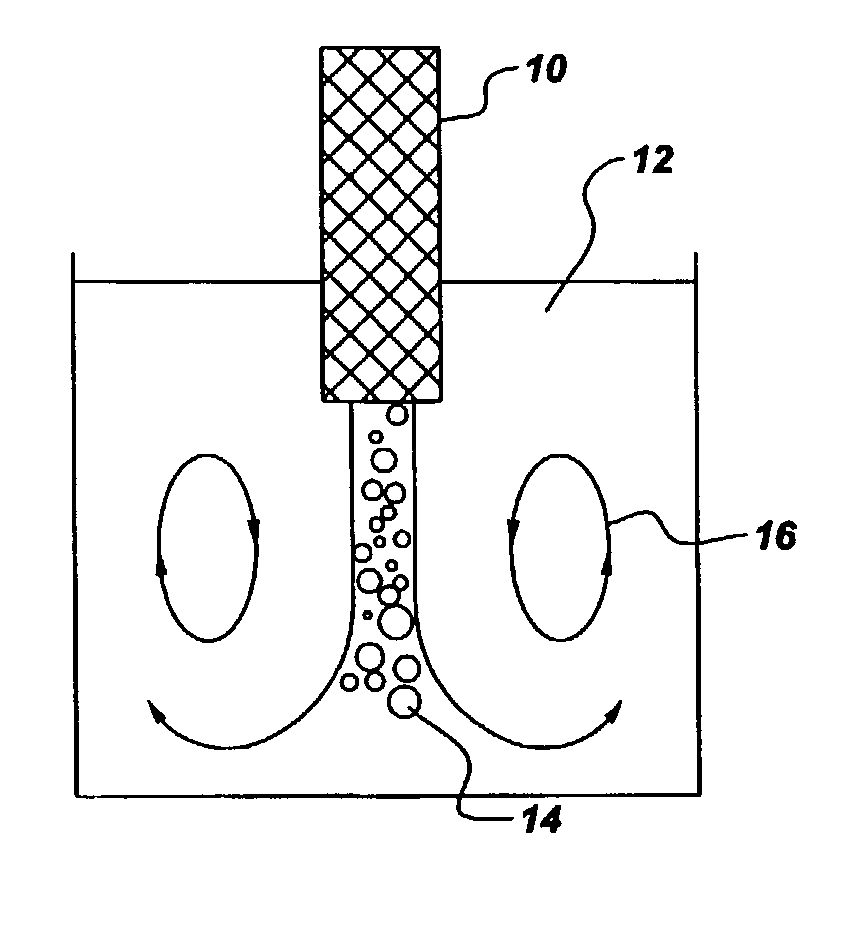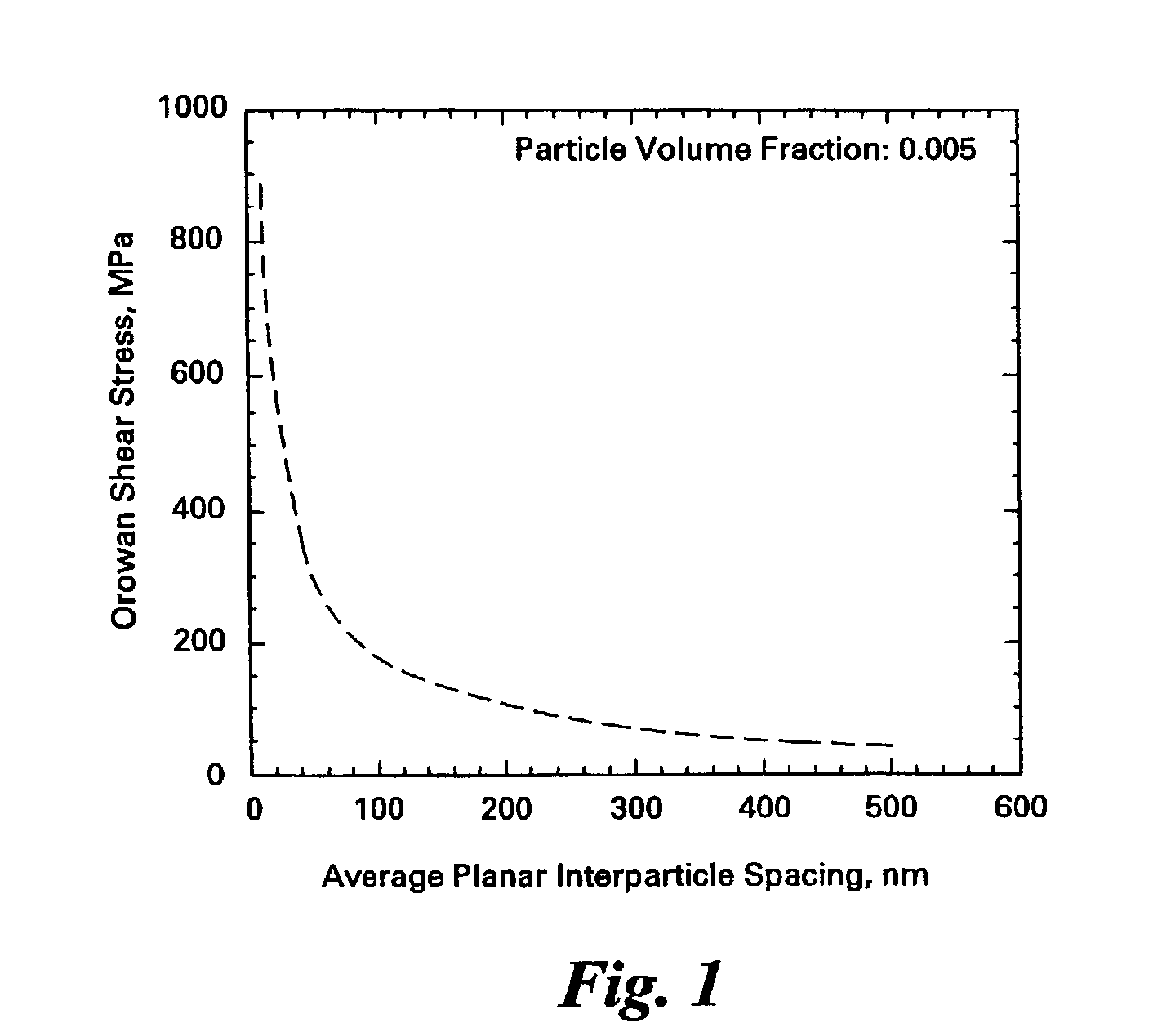Method for making materials having artificially dispersed nano-size phases and articles made therewith
a technology of nano-size phases and materials, applied in the direction of metal-working devices, transportation and packaging, etc., can solve the problems of composite materials that cannot take advantage of the unique benefits of nano-scale materials, non-uniform distribution of nano-scale phases, etc., and achieve the effect of improving the wetting of nano-sized materials
- Summary
- Abstract
- Description
- Claims
- Application Information
AI Technical Summary
Benefits of technology
Problems solved by technology
Method used
Image
Examples
example 2
[0033] An article comprising a nanocomposite material is made according to embodiments of the present invention. The article suitable for use as, for example, an engine block for an automobile, and the nanocomposite material comprises an aluminum alloy and a dispersion of aluminum oxide (alumina) particles having an average size of about 100 nm or less in at least one dimension, and an average inter-particle spacing of less than about 100 nm. The dispersion has size range that is less than about 10% of the mean particle size. The nanocomposite material has an interparticle spacing in accordance with embodiments of the present invention.
PUM
| Property | Measurement | Unit |
|---|---|---|
| Length | aaaaa | aaaaa |
| Length | aaaaa | aaaaa |
| Fraction | aaaaa | aaaaa |
Abstract
Description
Claims
Application Information
 Login to View More
Login to View More - R&D
- Intellectual Property
- Life Sciences
- Materials
- Tech Scout
- Unparalleled Data Quality
- Higher Quality Content
- 60% Fewer Hallucinations
Browse by: Latest US Patents, China's latest patents, Technical Efficacy Thesaurus, Application Domain, Technology Topic, Popular Technical Reports.
© 2025 PatSnap. All rights reserved.Legal|Privacy policy|Modern Slavery Act Transparency Statement|Sitemap|About US| Contact US: help@patsnap.com



